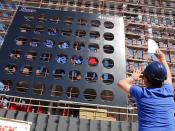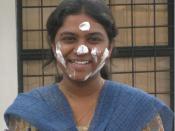One of the classifications that can be applied to a team is that it is a group of people. The Concise Oxford Dictionary (2001) defines group dynamics as "the processes involved when people in a group interact with each other. These interactions are a critical part of the success of any team. Fortunately, it is a part that team leaders can influence (Melymuka, 2002, p. 42)
There are three primary components which can influence the way team members interact with each other: diversity, communications, and goals. Understanding how these components affect a team allows a leader to moderate their influence.
Laroche (2001) said "... the dynamics of multicultural teams are quite different and often significantly more complex than the dynamics of culturally homogeneous teams, since team members may have quite different concepts of teamwork." (p. 22)
Good communications is key to the success of any team; "... sharp and competitive people can sometimes lack basic communication skills and (be) unable to work collectively in a co-operative way."
(LeGales, 2003, p. 11)
The dynamics of a team mostly affect its internal goals, but can influence how the team is perceived by others. (Isgar, Ranney, & Grinnel, 1994, p. 45). These components are the primary discussion of this paper.
There are many definitions of diversity, in general diversity refers to the ways that people in differ. Diversity in teams is more challenging than the simple definition because people in teams include different ethnicity, experiences, values and thinking styles. These differences are an advantage to a team because they bring diverse perspectives that increase the amount of skill and knowledge to the team. The variety of these differences also may aid in the resolution of conflict.
Creativity increases because there is no one best answer to solve problems. People work together toward a...



Good Essay
Cited correctly and a sound paper. Very informative.
0 out of 0 people found this comment useful.